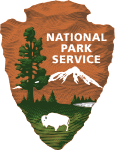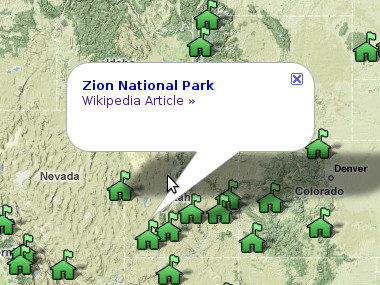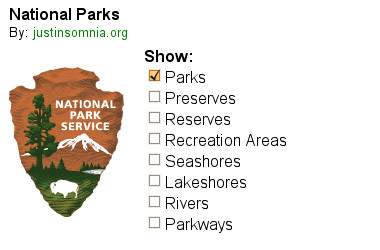I started Justinsomnia (during a bout of sleeplessness) with Blogger back in 2002. This was before blogs had built-in commenting functionality. Eventually third party apps came along (like Haloscan, YACCS) that added commenting, but I was reluctant. I didn’t want comments to compromise the integrity of my posts.
After my friends began to add comments to their blogs, I noticed a change in my reading behavior. Whereas my blog was static—it didn’t change unless I posted something new, my friends’ blogs were dynamic, changing throughout the day as people stopped by and left comments. As a result I started going back to their blogs more often to follow the conversation. Meanwhile my blog sat idle.
Eventually I caved. I added Haloscan comments to my blog a year and a half after starting it. My blog survived. And comments grew to be one of my favorite parts of the medium. After all, I’m human. I love the contact, validation, support, questions, and feedback they bring.
Which brings me to Twitter. At one point during the CM Summit, Evan Williams was comparing Twitter with other communication channels, and he said “it’s the fastest way to get a message to a lot of people. Unlike broadcast, it’s two-way.”
This is a remarkably simple statement, but it really struck me. To most outsiders, Twitter seems a little pointless. But they’re usually judging each tweet in isolation, disconnected from the larger Twitterstream. When you start thinking about it being a discrete part of a larger conversation, you start to see where the value is.
It occurred to me later that Twitter takes the best part of blogging, the comments, and dispenses with the posts. (No wonder it kills blogs!) When you think about it that way, it sounds more natural, and certainly more conversational than blogging. Blogging is also a one-to-many communication channel, but the aspects that made it two-way (comments, trackbacks, aggregators) were all gnarly hacks bolted on after the fact. With Twitter, the two-way is built-in.
To practically everyone I know, that sentence is probably tantamount to:
“I’ve been thinking about getting an email address.”
In other words they take 5 seconds to create, they’re free, and everyone has one. WTF!?
The one thing that’s been holding me back is a fear that it will slowly kill my blog. And I really really want to keep my blog alive!
The second hardest part is choosing a username. More than any other service, a Twitter username is the primary way to convey a sense of identity and personality. It’s the equivalent of your face in real life. That puts a lot of pressure on choosing a good one.
Yeah, I could go with justinsomnia or justincwatt, but I really don’t want to conflate my blogging or email/real life personas with Twitter. Sadly my first choice, jwatt is taken and unused!
It occurred to me randomly that an onomatopoeic curse word would be a REALLY FUNNY username. Imagine if your name was “argh” or “sheesh”. People would always be addressing you as if you were really annoying them:
Argh, why don’t you just make kale pesto for dinner?
or in twitterese:
@sheesh, haven’t you finished your holiday shopping yet?
That really amuses me. But it turns out they’re all taken! argh is pretty funny, and ack, doh, sheesh, bah, gah, geez, and damn are all taken (and largely unused).
Dunno, I guess I’ll just have to keep waiting for the perfect Twitter username to hit me.
 Some people are big sports fans. I’m a National Park fan.
Some people are big sports fans. I’m a National Park fan.
When I start thinking about going on an outdoor adventure, I look to see what parks I haven’t been to yet. When I’m going to be traveling to a new place, I look to see if there are any parks or monuments nearby. The only thing that would make this kind of enterprise easier is if all the parks were plotted on Google Maps.
Turns out Google offers the ability to create these map plugins they call mapplets, as part of their “My Maps” features. Unlike their original Maps API that allows anyone to put a customized Google Map on their site, with mapplets I can modify the core functionality of the Google Maps site itself. And then I can share these annotated maps with the world.
So that’s just what I did:

But a map with just a bunch of ranger station icons on it is kind of boring. The whole point of extending Google Maps is being able to add new functionality, not just data. What I really wanted to be able to do is show or hide parks by type.
So I did that too:

Cool huh? Definitely check it out and let me know what you think. Other than the rest of the 391 National Park Service units, what else should I make it do?
John showing off his Twitter account, where he was crowdsourcing his CM Summit interview questions for Twitter co-founder Evan Williams.
John Battelle: Twitter’s Quantcast graph shows 2 million uniques, Compete shows 3 million US uniques, Comscore tells us you have 1.5 million. What do you look at?
Evan Williams: We look at Google Analytics. People don’t necessarily compose on twitter.com. So we only see 50% of users directly. The rest are in SMS, desktop clients, etc.
John: Is this deja vu? Of Blogger? For everyone here, what is Twitter?
Evan: Social communication tool, status updates, framed around “What are you doing?”
John: Why do marketers care?
Evan: One-to-many in real time. IM/SMS is one-to-one. Fastest way to get a message to a lot of people. Unlike broadcast, it’s two-way. Search. Re: social networks, it’s not about friends. People are just opting into diff information sources. Don’t have to say “Dell is my friend”
John: Might you charge people for using Twitter?
Evan: Yeah. We’re still figuring that out. We’re still focusing on growth. Might need to charge for identity verification.
John: Is Twitter becoming a publisher? e.g. Election 2008
Evan: Purchased Summize to reveal things you didn’t know
John: Are you concerned about 3rd parties making money off Twitter?
Evan: I’m happy for them. It’s a win-win.
John: People say Google bought blogger because it was “virgin powder for AdSense”
Evan: That’s not true
John: Strikes me that there’s an AdWords opportunity there, when brands are mentioned, Tweetsense?
Evan: Can I use that?
John: Why not put up AdSense?
Evan: It doesn’t excite me as much as other things. I want to focus on things that are more organic. Twitter is more about opting into information. e.g. sponsored tweets
John: Search?
Evan: We haven’t done search because of infrastructure.
John: I can’t imagine my mother using the twitter grammar (hashes, etc)
Evan: At the top of my priority list. All sorts of things are broken with the user experience. Search for “I don’t get it.” But they’re not integral to using Twitter—basically user hacks. There’s no benefit to Twitter if you sign up and don’t know who to follow. We need to immediately deliver value. Bring search to the front.
John: What’s the base demographic of the Twitterverse?
Evan: We don’t know. We know location based on IP. Survey 55% Female. Older average audience than Facebook. Used to be early adopter male geeks. 50% is US.
Question: News alert specific features?
Evan: Twitter is faster than other mediums, bottoms up. Talking to a lot of news orgs, e.g. CNN. Ten words at the bottom of Twitter search (John: Twitter-zeitgeist) summarize what people are searching for.
Question: Most close friends don’t follow me back on Twitter? Connections to Facebook?
Evan: Facebook’s API allows us to write statuses, but not get them out.
John: Is Facebook’s “What are you doing now?” an homage to Twitter?
Evan: Completely coincidental.
Question: Would you make extended features available for money?
Evan: I don’t like the idea of a premium account. It’s a burden to support.
Question: how do you approach usefulness vs. making money, re: marketing?
Evan: I’d be in line with John, re: conversation. The relationship will create value over time. Marketer came to us with an ad buy, we convinced them to create an account, which you can use forever.
John: It’s hard for marketers to maintain that relationship over time
Evan: The campaign-mentality doesn’t work on Twitter. You can’t buy space, you have to build followers over time.
 This is more to aid my memory the next time I have to set up a LAMP development environment on a fresh install of Ubuntu (can you tell what I’ve been up to this weekend?). The nice thing about starting from a blank slate is that it gives me a chance to really think through the overall installation setup and find solutions to issues that I’m normally too busy to track down.
This is more to aid my memory the next time I have to set up a LAMP development environment on a fresh install of Ubuntu (can you tell what I’ve been up to this weekend?). The nice thing about starting from a blank slate is that it gives me a chance to really think through the overall installation setup and find solutions to issues that I’m normally too busy to track down.
Note: this is intended for local development purposes only, not production servers.
- Set up the base LAMP system
sudo apt-get install apache2 php5 php5-cli php5-mysql mysql-server mysql-client
Note: for ease of development access, I prefer to leave the root MySQL password blank.
- Set up some optional but useful PHP modules
sudo apt-get install php5-gd php5-curl php5-sqlite php-pear smarty
- Set up subversion for source code control
sudo apt-get install subversion
- Set up postfix and alpine (like Pine) for sending and checking email locally
sudo apt-get install postfix alpine
- Prevent Apache error “Could not determine the server’s fully qualified domain name”
echo "ServerName localhost" | sudo tee /etc/apache2/conf.d/fqdn
- Enable public_html userdirs, e.g. http://localhost/~username/
sudo a2enmod userdir
- Enable url rewriting for pretty URLs
sudo a2enmod rewrite
- Restart Apache
sudo service apache2 restart



